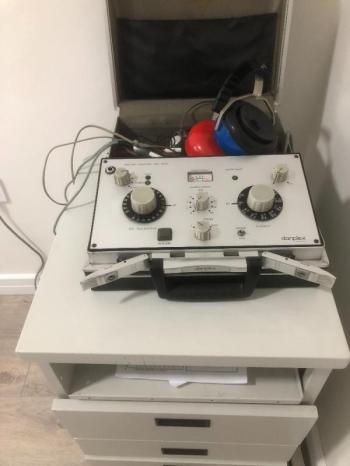
What is a hearing test?
Why is a hearing test done?
The sense of hearing is one of the most basic features of our lives and often does not receive the necessary importance until it is lost. In fact, hearing is a gift for us. With the developing world, the details we encounter in daily life make life more difficult for everyone. If you have hearing loss, you may have to make an effort to have conversations with loved ones, meetings, phone calls, or even watching television. In such situations, most people with hearing loss withdraw from social life and isolate themselves. Their quality of life is noticeably reduced.
Hearing connects us to our family, friends and all the people around us. The sense of hearing is the most important part of our communication in daily life. However, few of us realize the role that the ear, which is actually a very complex organ, plays in our lives.
In our country, 0.03% of babies born every year, that is 39 000, are born with hearing loss. When later hearing loss is added to this number, it has been determined that 360,000 people between the ages of 0-18 have hearing loss and 2 million adults have hearing problems (TUIK 2013).
When should I get tested? Do not be late!!!
Having a hearing test, when necessary, provides early diagnosis of a possible hearing loss, and thus, irreversible loss can be prevented or early treatment is possible. In the following cases, it would be helpful to see an ENT specialist and have a hearing test.
Where can I get a hearing test?
Hearing loss has many causes and the problem comes from the parts that make up the hearing system. Ear, Nose and Throat (ENT) specialist and audiological diagnostic centers can determine the cause of the problem and where it originates. The findings obtained as a result of the tests shed light on the measures to be taken to improve the existing hearing and prevent it from getting worse.
The Audiology department is the department where many tests used in the diagnosis of hearing and balance diseases of the patients, guided by an otolaryngologist, are performed. The tests are performed by audiometrists and audiologists and evaluated by ENT specialists. Tests are conducted in silent cabins so that the level of hearing and comprehension can be reliably determined.
What are hearing tests?
Pure tone audiometry is the most widely used basic test in audiology. It is a test that determines the minimum hearing levels of both ears at all frequencies. Patients are tested in silent cabins with full sound insulation. Different frequencies and intensities are given to the patient's ear through headphones. When patients hear the sound, they give a signal by pressing the button in their hands. The test continues until the least heard intensity level and the last heard level is determined and marked on the audiogram form showing the hearing level of the person. Here, the airway hearing level is determined. Then, the bone conduction hearing thresholds, which allow us to hear in the form of vibration through the bone, are also determined and marked on the audiogram.
Speech tests It is a test that measures the percentage of hearing and understanding speech of the patient. The words are said to the level that the patient hears the least and are asked to repeat them. After the hearing thresholds are determined, some words are read with the intensity that the patient can hear. The measurement is made according to how many of these words the patient can repeat.
Tympanometry is a test to measure the pressure of the middle ear. It is very easy to apply, even for babies. In order for the measurement to be made, the eardrum must not be perforated and the ear canal must be open. It is often used to diagnose fluid accumulation in the ear (serous otitis media).
Acoustic reflex (stapes reflex) measurement The stapes reflex is a reflex that occurs when the stapes muscle in the middle ear moves in response to an acoustic stimulus. Measurements are made with tympanometry. This reflex is recorded by giving a loud sound to one ear.
Otoacoustic emission (OAE) is a test that gives important information about hearing. It allows to test the function of the inner ear (cochlea) of the person. It is especially preferred for hearing screenings of babies who cannot respond to auditory stimuli .
Brain stem audiometry (BERA) This test gives information about the conduction of the responses to the audible stimulus from the inner ear to the brain stem. These responses are measured as some electrical waves. With the interpretation of the waves formed, information about the level of hearing, inner ear and brain stem diseases is obtained. It requires the patient to sleep and recording in a quiet environment for measurement. It is necessary to measure under anesthesia in patients who cannot sleep. It is the most objective test in determining the level of hearing.
www.kbbv.org.tr